



McKinley Elementary School - YEAR 2
Franklin McKinley School District, San Jose, California
Contents:
Differentiation of Staff Development
In order to meet the varions needs of the staff in their implementation of Thinking Maps®, staff development consisted of four professional development days with the Thinking Maps® consultant. The teachers were grouped by their proficiency levels according to their responses on the Implementation Survey administered in June of 2007. After analyzing the data from the surveys, there were five different groups of teachers. The teachers were not explicitly told why they were placed in each group but it was explained to them that their placement was determined by the survey results.
After providing whole group staff development for over three years, the consultant planned a differentiated professional development to meet each group's needs. The goal was to increase the teacher level of implementation at least one level according to the Thinking Maps® rubric. As the year progressed, it became difficult to address every group's need due to budget deficits in California and time restrictions. As a result, as often happens in the classroom, the most proficient group of teachers did not receive any professional development training.
In writing the questions for this Action Research, the team was hopem that by differentiating staff development, teachers would become more comfortable and competent in their teaching with Thinking Maps® according to the rubric and that this would reflect on the student's performance with Thinking Maps®. The qualitative data gathered at the end of the school year June 2008 indicates that the teachers felt their instruction had improved one level according to the Thinking Maps® Implementation Rubric.
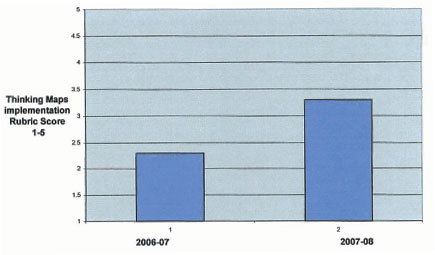
In addition the survey results indicate that the teachers felt that the small group differentiated staff development was an improvement over the whole staff development they received the previous year.
Another important aspect of differentiation of staff development the team hoped to observe as that teachers would become more versatile in their implementation of Thinking Maps®. In order to prove this assertion the team included the student assessment of thinking. When reflecting on the results of those assessments, the upper-grade concluded that they needed to be more versatile in their instruction aud use of Thinking Maps®. However, the primary grade teachers felt that they were using all Thinking Maps® in all subject areas.
As a result of the previous Action Research work at McKinley, the team learned that it was necessary to gather qualitative data differently from new and veteran teachers. The Leadership Team wondered if the new teachers to McKinley would advance to same level of implementation as the veteran teachers in the use of Thinking Maps® if the professional development was differentiated. The survey results indicate that the average score for new teachers of implementation was very close to the average end of the year score for veteran teachers. The new teachers also indicated that due to the training received in the school year 2007-08, the Thinking Maps® facilitated their inclusion in the McKinley Staff Professional Learning Community. Also, the new teachers considered that Thinking Maps® are highly effective as a teaching strategy tbat improved their instructional abilities.
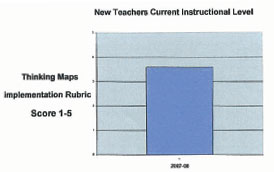
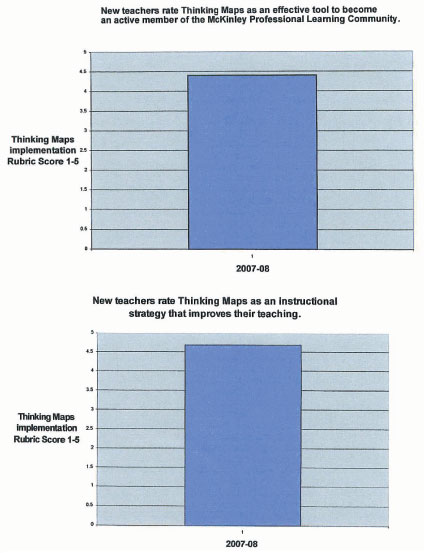
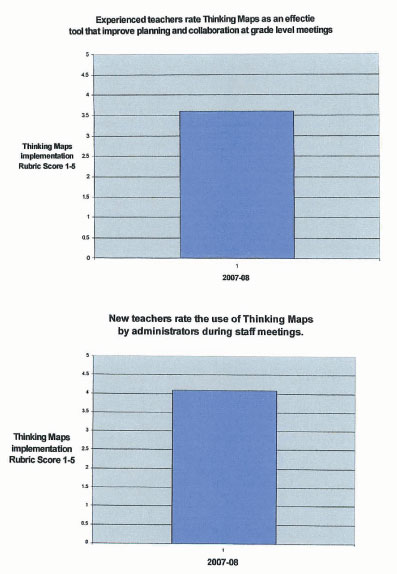
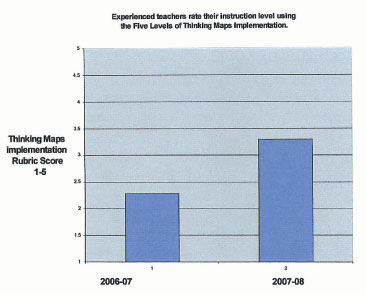
Another question the team considered for research was if the teachers will show evidence of using Thinking Maps® in different contexts such as lesson planning, staff, and committee meetings after differentiated staff development.
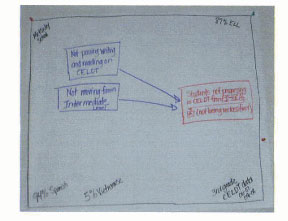
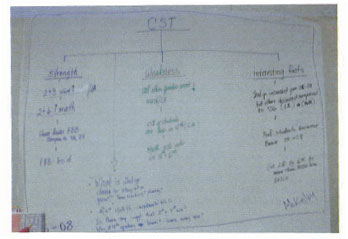
It is obvious fiom the qualitative data including video-clips and pictures, that the use of Thinking Maps® in staff and grade meetings has created a common language for discussion, data analysis, and lesson planning. Every member of the McKinley Community is able to use the Thinking Maps® in the context of staff and grade level meetings for the purpose of planning, problem-solving and staff presentations. It is apparent to any visitor to McKinley School that Thinking Maps® provide a common language for all staff members.
The ultimate goal for diierentiating staff developnent was not only to enhance teacher proficieny in the use of Thinking Maps® but improve students' ability to identify the higher level thinking processes.
In order to gather data that reflected students' fluency in Thinking Maps®, the team created rubrics for Thinking Maps for Kindergarten, First, Second, and Third-Sixth grades. In Kindergarten and First Grade, the students had to name the map and the thought process. It was administered individually by the teachers using pictures of each Map.
In Second Grade, teachers had their students draw all eight maps, and held individual test chats to determine if the students hew the name and thought process of each map. When scoring, the students received a higher score if they included the frame of reference in their pictures of the maps.
Also, Dr. David Hyerle created two 3rd-6th grade level assessments. One, "Marcus", was the pre-test, and another, "Maria", was the post-test. The assessments were at a third grade readability and all 3rd-6th students took the same test. The tests were scored based on the rubrics. The grade level rubrics and testing protocols are included at the end of this report.
In the fall of 2009, the grade levels reflected on the data fiom the Thinking Maps® student assessments. The grade-levels were asked to identify strengths and areas of improvement in the implementation of Thinking Maps®. Overall, the teachers realized that the students could draw and name each map but lacked the ability to idente the correct thought process for each map. The grade level teams realized that the students had a difficult time with the Multi-Flow Map for cause and effect. In their discussions, the teachers determined that the students struggled with recognizing the event. In general, the grade teams identified that the data indicated a clear need for students to understand the thought process for every Thinking Maps® as well as promoting consistent and correct use of the frame of reference. Also, the teams came to the conclusion that they needed to deepen the implementation of Thinking Maps® in all content areas.
The grade-level teams were also asked to use a one-sided Multi-Flow Map to propose new strategies to be used in the classrooms to deepen the implementation of Thinking Maps® in the classrooms. The strategies included:
- Identify text structure in different content areas and choose the appropriate Thinking Map®
- Explicit questioning of students regarding the thought process behind each map
- Improve collaboration with grade-level professional learning communities
- Use Thinking Maps® chants
- Focus on the thought process rather than the Map itself
- Emphasize the use of the fiame of reference including point of view and the big idea
Copies of these teacher-generated Multi-Flow Maps have been scanned and included at the end of this report.
Conclusion
We began this project with the intention to prove that differentiation of staff development would positively impact teacher instruction and consequently improve student achievement. The teachers were grouped by their proficiency levels according to their responses on the implementation survey (Five Levels of Thinking Maps® Implementation Rubric). In the context of extreme budget cuts in California Schools, the Leadership Team had to prioritize the staff development received by each group. The Team decided to focus on the teachers on the low end of the rubric. Due to the above mentioned budget cuts, teachers at the rubric level of four or five, did not receive any staff development. The teachers who did not receive my staff development during this year had no way to rate the dflerentiation of staff development. As a result, the data gathered &om this core group of teachers does not accurately reflect the power of differentiating instruction. Those teachers who participated in the training during 2008- 09, rated themselves higher on the rubric for teacher implementation of Thinking Maps®.
However, several of them mentioned their dissatisfaction with their grouping even though the leadership team did not publicly announce the levels of each group.
According to the survey data, grade level collaboration improved within and across grade levels and facilitated focused staff meetings due to the common language that the Thinking Maps provide.
The New Teacher Survey data, clearly shows that the use of Thinking Maps® helped them to become active members of the McKinley Professional Learning Community. Also, administrative use of the Maps during staff meetings facilitated their involvement in staff and grade level decisions.
After analyzing the prelpost student assessment data, we conclude that the students improved their basic mapping skills. However, it is very evident that the teachers need to focus on a deeper understanding of the thought processes and kame of reference. Upon this realization, the staff has been working on refining and elaborating their content instruction with Thinking Maps®.
Also, when the grade levels reflected on their next steps for deepening the implementation of Thinking Maps®, it is obvious that different grade levels are at various levels of implementation according to the rubric. One of the goals for each grade level will be to analyze their next steps using the Thinking Maps0 implementation rubric and determine what their level of expectation for students based on the "next steps" they wrote on their maps.
Next Steps:
- Consistent and continuous formative assessment of student understanding of Thinking Maps®
- Create more grade-level specific assessments
- Focus on Write From the Begiming and Path to Proficiency for English Language Learners
- When budget allows, plan for more staff development according to teacher needs
- Additional considerations to differentiating stafT development include increased costs: consultant and substitutes.
Data, Rubrics, Thinking Maps®
Rubrics
- Thinking Maps® Rubric - K-1 (acrobat pdf file)
- Thinking Maps® Rubric - 2nd (acrobat pdf file)
- Thinking Maps® Rubric - 3-6 (acrobat pdf file)
Data
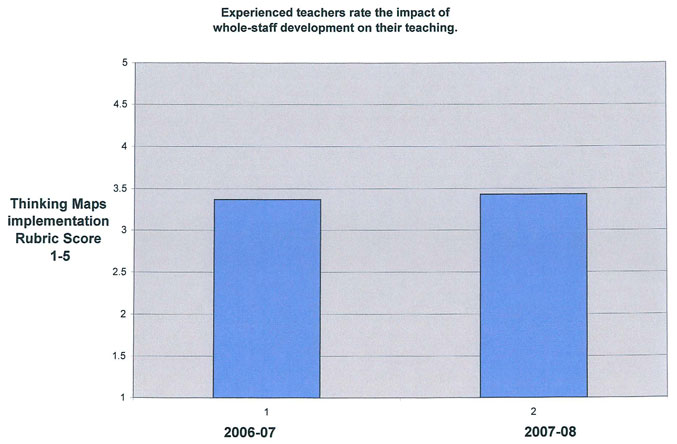
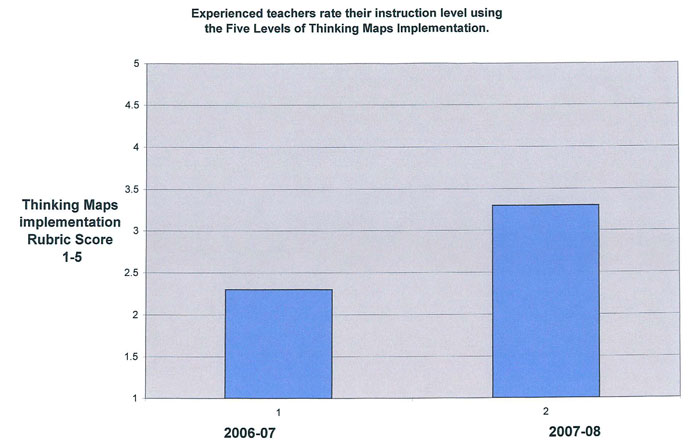
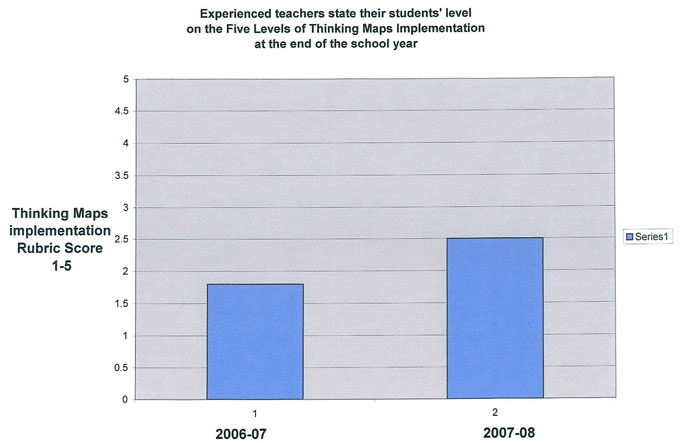
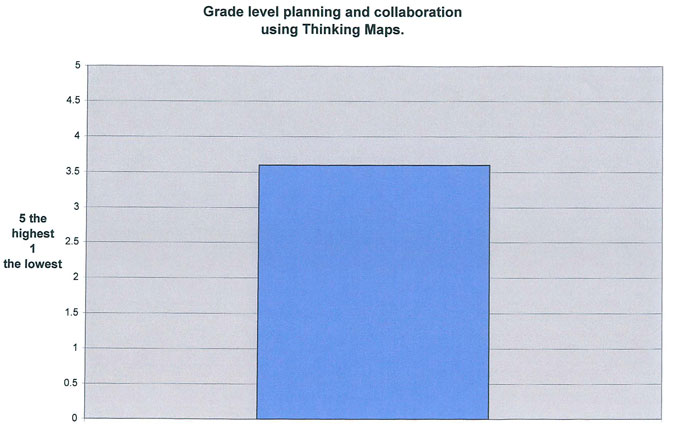
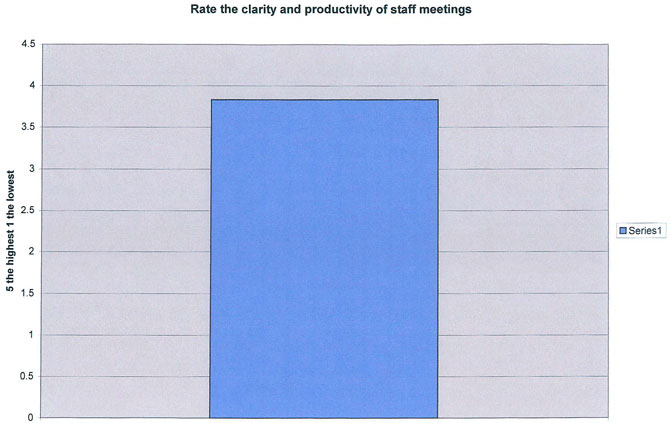
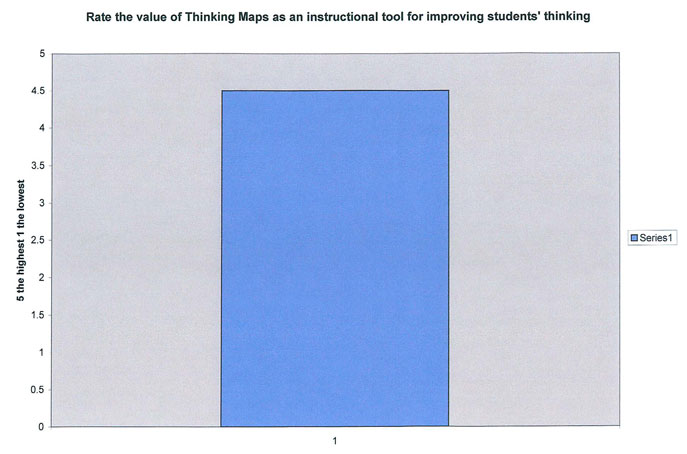
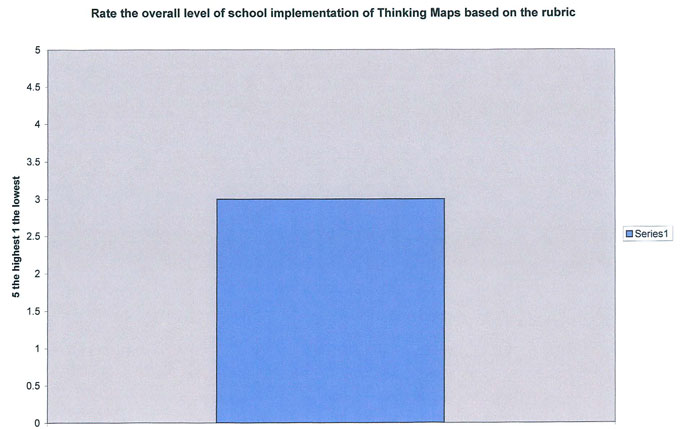
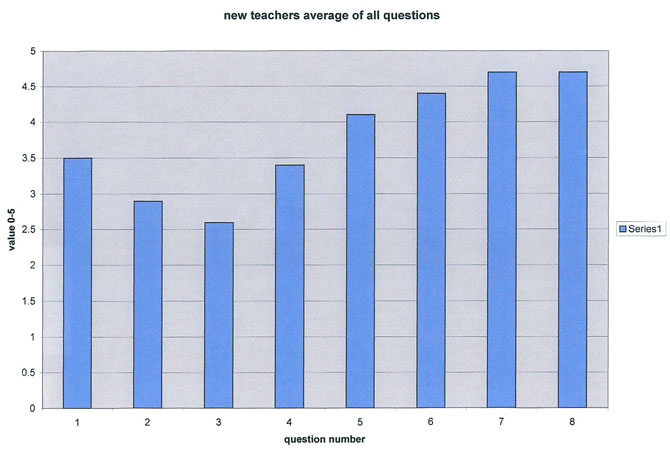
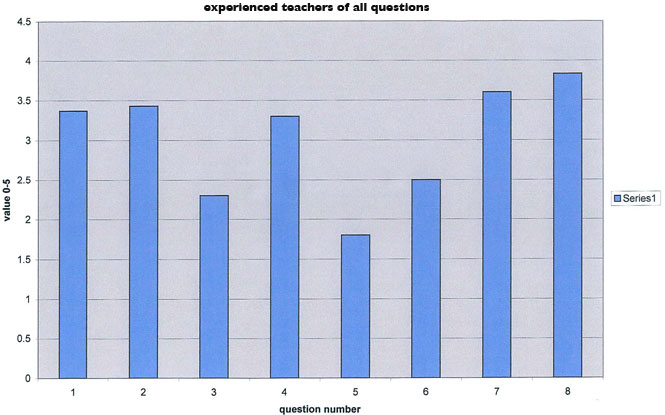
Thinking Maps®
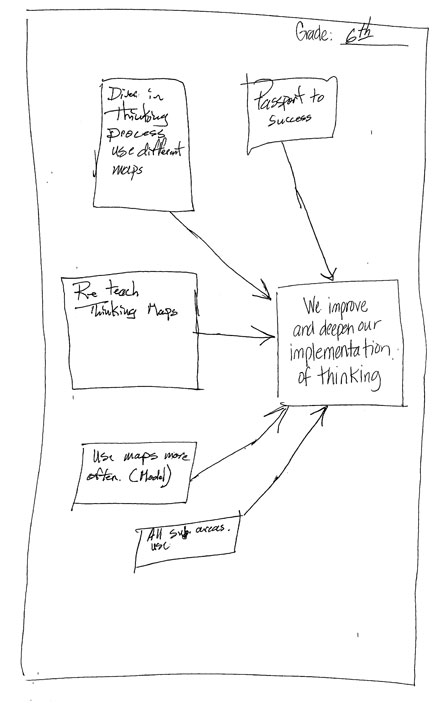
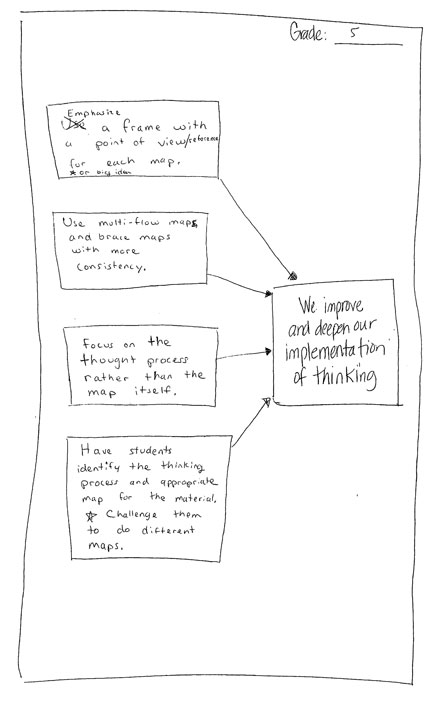
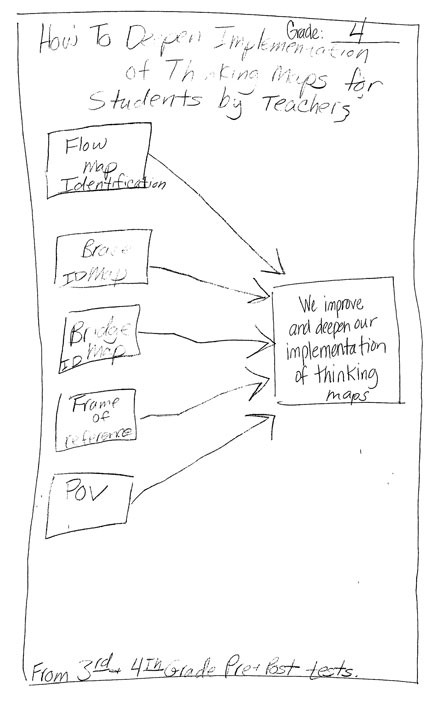
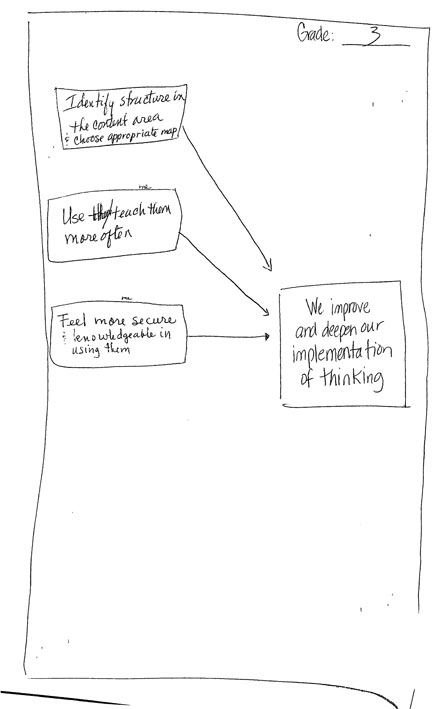
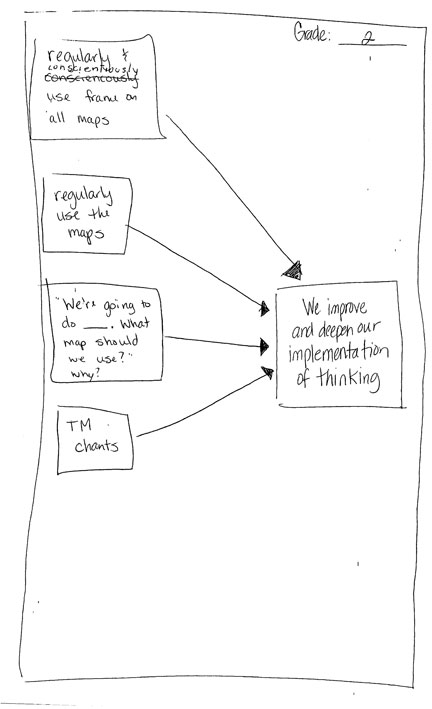

Renee Demuth - Kindergarten Teacher: New Procedures for Committees.
If you don't have quicktime on your Windows or Macintosh, download the free Quicktime Player on the Apple Quicktime site.
Thinking Maps during a Parent's Meeting.
If you don't have quicktime on your Windows or Macintosh, download the free Quicktime Player on the Apple Quicktime site.
Thinking Maps during an Administrator's Meeting.
If you don't have quicktime on your Windows or Macintosh, download the free Quicktime Player on the Apple Quicktime site.
See the Menu on the left column at the top of this page for more sections in this case study on McKinley Elementary School in San Jose, California for year one and year two of the case study.
Download the Reports
Download the Complete Year 2 Final Report on McKinley Elementary School as a PDF file.
Download the Complete Year 1 Final Report on McKinley Elementary School as a PDF file.